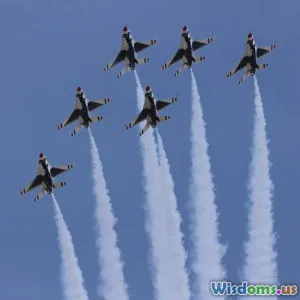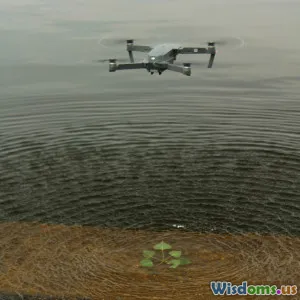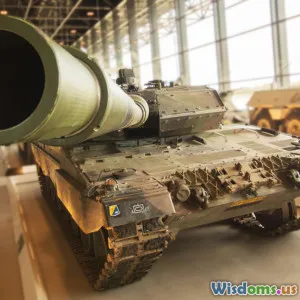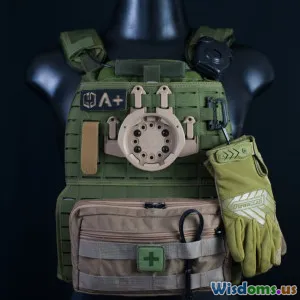
Military Performance: The Simulation Revolution
8 min read Explore how advanced simulations are transforming military performance, training, and future battle readiness. (0 Reviews)
Military Performance: The Simulation Revolution
Introduction
The modern battlefield no longer resembles the warzones of the past. Thanks to breakthroughs in technology, a silent revolution is underway—one fueled not by boots on the ground but by precision algorithms, immersive training environments, and predictive simulations. This simulation revolution is redefining military performance by enhancing readiness, minimizing risk, and forging new capabilities that were once considered science fiction. In this article, we will explore how simulation technology is transforming the military landscape, outlining key innovations, real-world implementations, and the implications for future defense strategies.
The Rise of Simulation in Military Training
Beyond Traditional Training
For decades, military training hinged on live drills, physical exercises, and war games conducted in controlled environments. These methods, while foundational, present limitations including high costs, logistical challenges, and limited scenarios. Enter simulation technologies—virtual reality (VR), augmented reality (AR), and computer-generated forces—that offer immersive, versatile, and scalable training.
For example, the U.S. Army's Synthetic Training Environment (STE) intends to create a comprehensive training platform that merges live, virtual, and constructive simulations. Soldiers can engage in dynamic scenarios replicating complex terrains and adversaries, enabling repeated practice without exposing personnel to danger or depleting resources.
Improved Cognitive and Tactical Skills
Simulations allow soldiers to experience realistic combat situations where decision-making under pressure is crucial. According to a 2021 report by the RAND Corporation, troops trained in realistic virtual environments showed a 30% improvement in decision-making speed and accuracy compared to traditional methods. The ability to rehearse responses to uncommon or highly complex situations helps develop cognitive agility.
Cost Efficiency and Sustainability
Traditional live-fire exercises entail significant expenses—not just for ammunition and equipment, but also for environmental impact and infrastructure maintenance. Simulations call for upfront investment in technology but eventually reduce recurring expenses. The British Ministry of Defence reported using VR simulators for aircraft pilot training has saved millions annually.
Technological Foundations of Military Simulations
Advanced Computing and AI
At the heart of the simulation revolution lies the remarkable progress in computing power and artificial intelligence (AI). High-fidelity simulations demand real-time processing of vast datasets such as topography, weather conditions, and enemy behavior patterns. AI enables autonomous agents within simulations to act with realistic unpredictability, creating more engaging and valuable training experiences.
The Defense Advanced Research Projects Agency (DARPA) has pioneered AI-driven simulation tools like the CODE (Co-Design of Hardware) program, which supports adaptive training environments that adjust difficulty and tactics in sync with the trainee’s actions.
Immersive Virtual and Augmented Reality
Immersive VR headsets and AR overlays present realistic sensory environments that mimic sights, sounds, and spatial awareness in combat. For instance, the U.S. Navy’s Next Generation Enterprise Network (NGEN) supports VR-based training that seamlessly integrates ship handling, damage control, and combat systems. Trainees can interact with digital avatars and environments tailored to specific missions.
Networked Multi-domain Simulations
Modern conflicts span land, air, sea, cyber, and space domains. Simulations are evolving into interoperable networked systems enabling joint-force training across multiple platforms. NATO’s Distributed Mission Operations network connects allied forces worldwide for shared exercises, improving coordination and interoperability.
Real-World Examples and Impact
Project Convergence and Future Combat Systems
The U.S. Army's Project Convergence showcases how simulation integrates into future combat operations. By leveraging simulation analytics, commanders are provided with real-time data to make faster, more informed decisions. Simulated testing of autonomous vehicles and drone swarms demonstrates operational tactics before physical deployment.
Israeli Defense Forces’ Virtual Exercise Centers
Israel’s military has utilized simulation extensively for urban warfare and counterterrorism training through virtual exercise centers. Realistic recreations of urban environments affected by changing variables enhance preparedness for asymmetric warfare challenges.
Pandemic Response and Simulation
Simulation isn’t confined to warfare. Military medical units have implemented virtual simulations to train personnel in pandemic scenarios, leveraging lessons from COVID-19. These simulations tested logistical frameworks, supply chain management, and rapid deployment of medical assets under crisis.
The Future of Military Performance Through Simulation
Ethical Considerations and Human Element
While simulations offer unmatched advantages, experts caution against over-reliance. The unpredictability of human behavior and psychological factors in actual combat require ongoing integration of live training and human judgment. Inclusive AI ethics must guide the development of autonomous training tools to ensure accountability.
Incorporation of Quantum Computing
Emerging quantum computing technologies promise to exponentially accelerate simulation capabilities by solving complex algorithms far faster than classical computers. Forecasts suggest that quantum-powered simulations could optimize logistic chains and battlefield maneuver predictions with unmatched speed.
Expanding Accessibility and Training Democratization
Cloud-based simulation platforms may democratize access to cutting-edge military training tools for allied nations and reserve forces. This widespread availability can build interoperability and shared understanding across coalition forces, improving collective security.
Conclusion
The simulation revolution is more than a technological shift—it is a fundamental transformation in how militaries train, prepare, and operate. From immersive VR training rooms to AI-driven predictive environments, simulations are enabling faster, safer, and more effective military performance. As these technologies continue to evolve, they promise not only to enhance individual competence but also to shape the strategic decision-making that ensures security in an increasingly complex global landscape. For militaries worldwide, embracing the simulation revolution is not just an opportunity; it is an imperative for future battlefield dominance.
By understanding and harnessing the power of simulation, military forces are stepping into a new era—an era where the boundaries between the virtual and real worlds blur, but the stakes remain profoundly human.
Rate the Post
User Reviews
Popular Posts





















